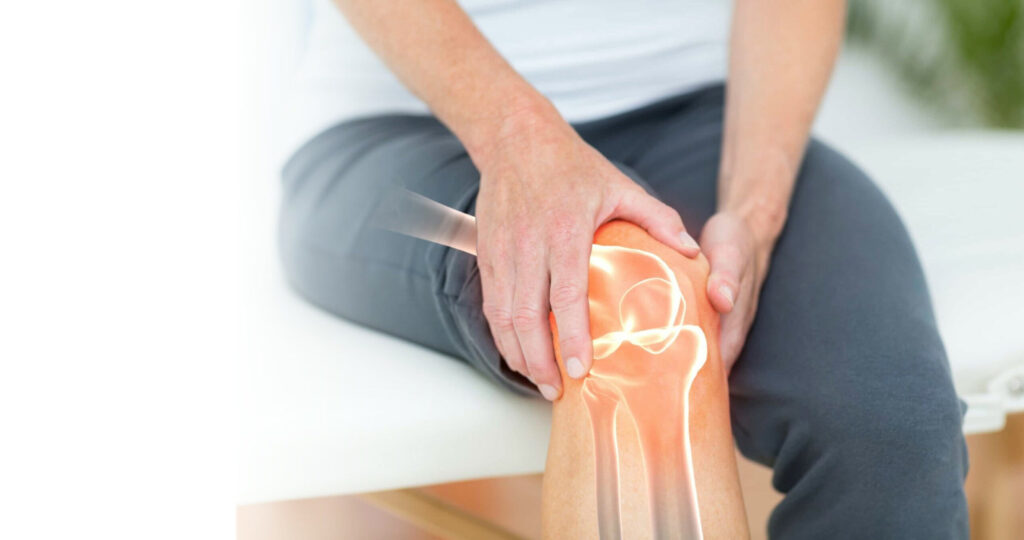Written by: Alex Allegro (Accredited Exercise Physiologist)
Arthritis is a generalized term, pertaining to a range of conditions that impact upon the joints of your body. Common symptoms often include feelings of joint stiffness, pain, and reduced range of motion.
The most common type of Arthritis is Osteoarthritis.
Osteoarthritis can be thought of “wear and tear” to a joint and a degradation of the joint cartilage. According to previous studies, 2.2million Australian’s were affected by the condition in 2018, with the prevalence increasing as time goes on, and as the population ages.
The most common risks for developing osteoarthritis include previous traumatic injuries to a joint, aging, obesity and repetitive high impact loading with poor technique (i.e. repetitive jumping with limited control on landing).
Commonly, the joints most affected in the body by Osteoarthritis are the hip and knee.
Osteoarthritis can be a debilitating and painful condition. It often impacts upon a persons ability to live their daily life pain free; and to complete their ‘day to day tasks‘ or hobbies without any discomfort.

Effect of Osteoarthritis on Life(style!)
I’ve got sore joints, exercise is bad right?
No, in fact, exercise is quite the opposite for osteoarthritis! Through muscular contraction and movement, it allows for our joints to be taken through active motion, allowing for new fluids to be pumped in and out of the joint space, aiding in joint health.
Additionally, the stronger your muscles are, the more efficient they will work and will place less pressure on those joints affected by osteoarthritis.
The contrary thought that exercise is bad for osteoarthritis joint pain may also further contribute to the burden of the condition. Avoiding activities and tasks you enjoy can not only further reduce lean muscle tissue quality, but the de-conditioning of muscles may place more stress on your joints.
This deconditioning will make it harder to perform daily tasks of living such as lifting objects, going n holidays or eventually even getting up out of your chair,
Along from the decline in physical capacity, a reduced ability to perform tasks you love without pain and a cessation of activities to avoid symptoms all together may contribute to a lower quality of life as your age.
Exercise and Osteoarthritis
Lifestyle modifications are commonly regarded as the most appropriate interventions for the treatment of arthritis.
It is recommended that individuals partake in an exercise program from an accredited exercise physiologist to help strengthen muscles and improve joint function.
A structured exercise program should also aim to achieve weight-loss to help ease the burden of excessive load through the effected joint.
Research shows that a 10% reduction in weight results in an improvement of 28% in knee function for those with knee osteoarthritis. Additionally, weight-loss is beneficial to combat the condition as central adiposity, fat around the abdomen and visceral organs, can increase the amount of inflammatory markers present within the body, therefore contributing to the joint inflammation and degradation as we age.
Reductions in weight can not only reduce inflammation present within the body, but it can also reduce the total load going through each joint with movements such as walking or climbing the stairs.
A structured exercise program should involve a balance between upper and lower body exercises, as well as avoiding high impact activities such as running and jumping.
In some cases, lifestyle modifications may not be enough, as some individuals may require an operative approach to reduce pain.
An operative approach may include a full or partial knee replacement or a hip replacements.
In these cases, exercise pre-surgery has also been shown to improve recovery rates post surgery, and has led to better outcomes for those experiencing osteoarthritis.
In some cases, individuals who have once required a total joint replacement and have commenced an exercise intervention prior to surgery, have avoided surgery all together!
If you’re experiencing arthritic symptoms and want to get back to doing the things you love pain free; contact us at Inspire Fitness to discuss with one our Accredited Exercise Physiologists and book in a consult today!
